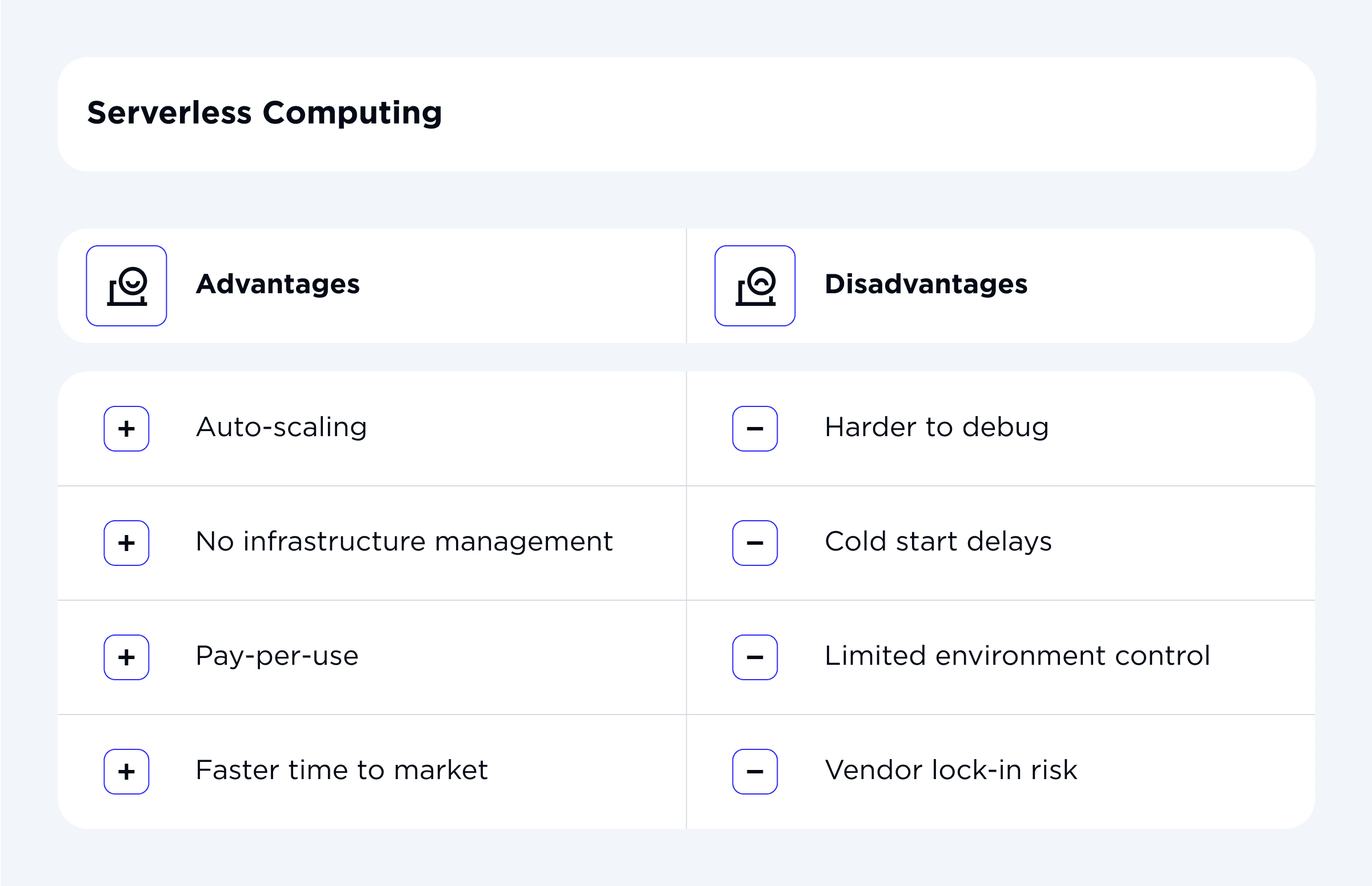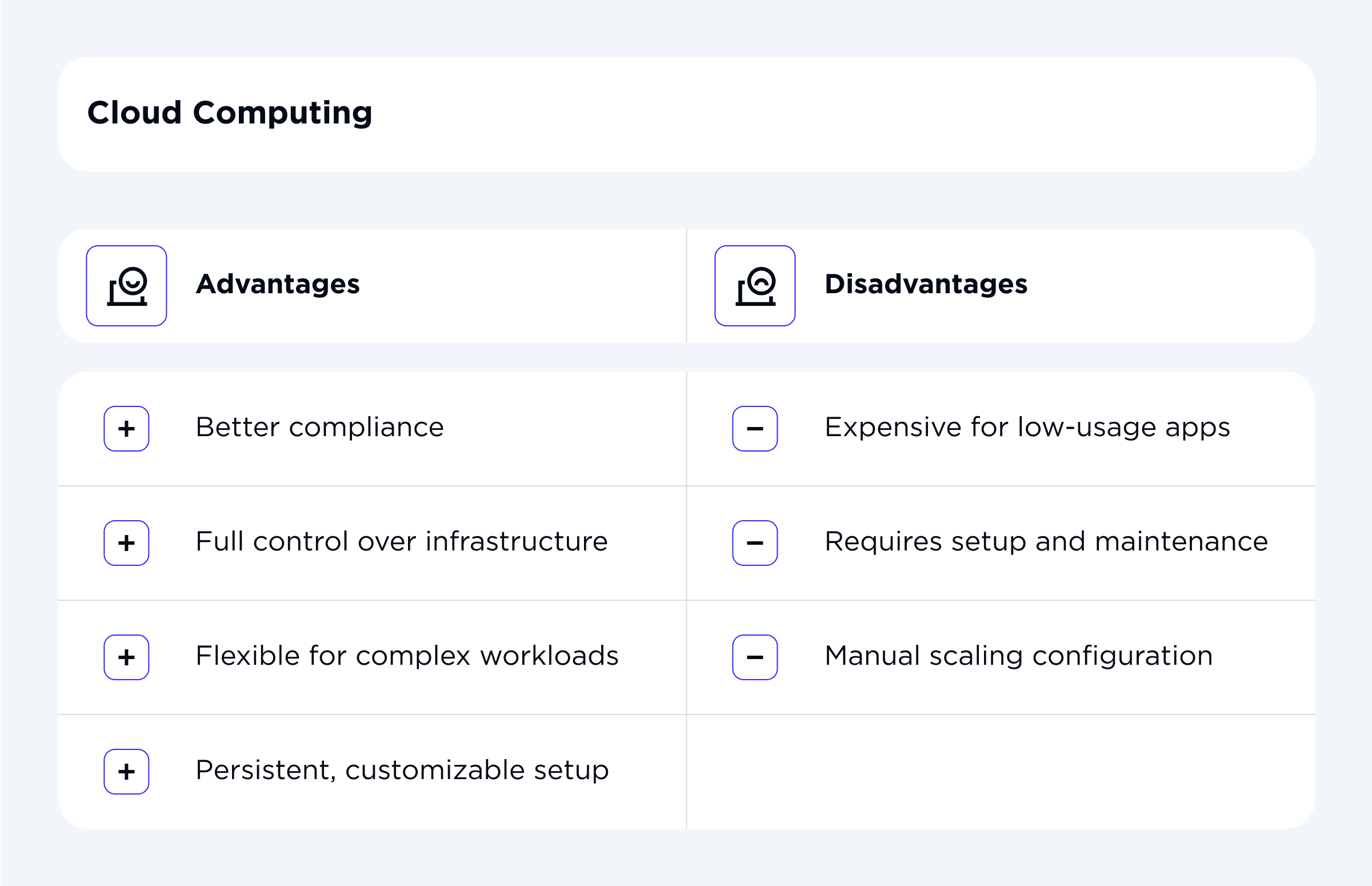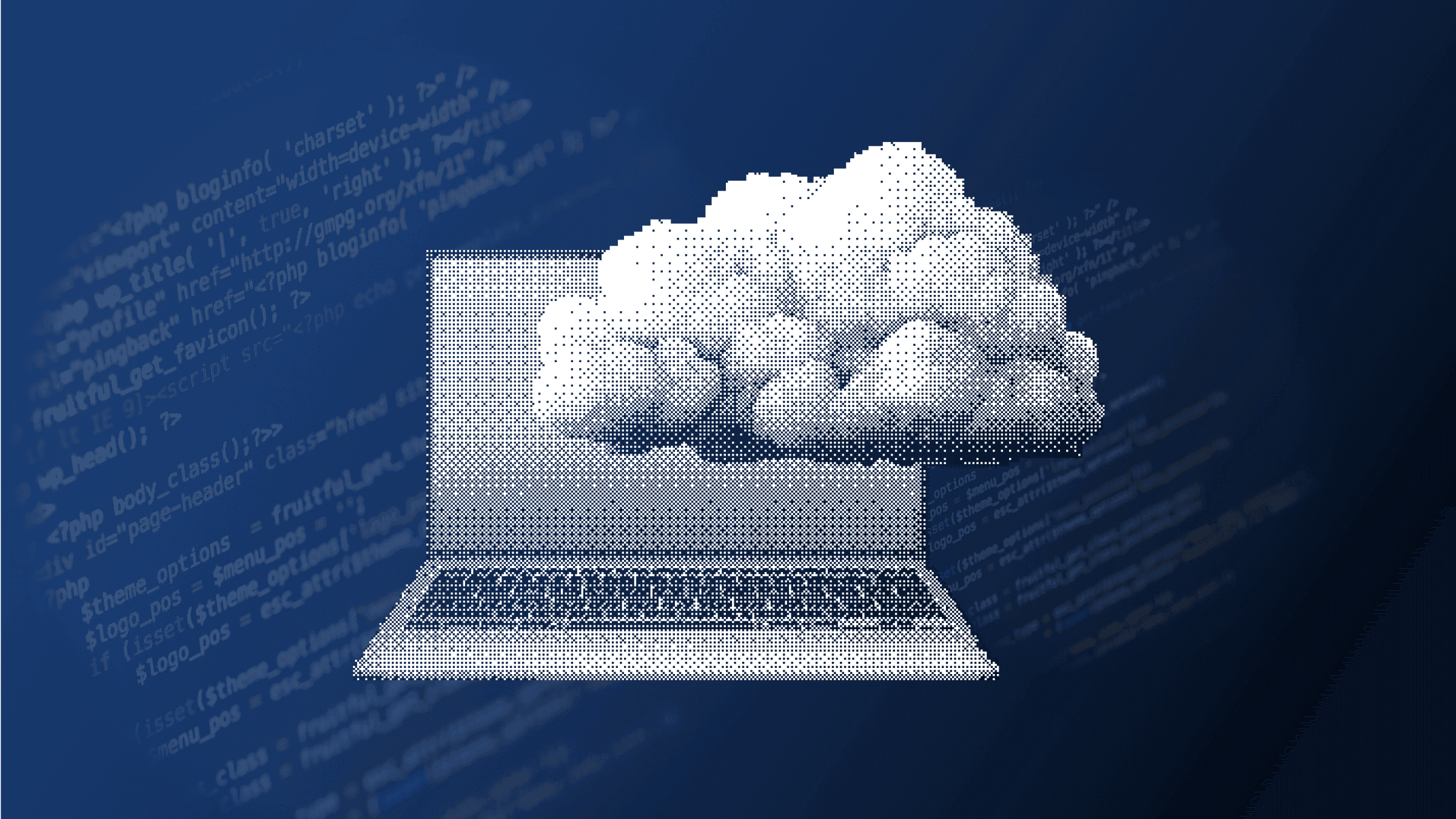If your organization is looking for top-tier backend services, you might find it useful to discover more about serverless and cloud computing. All the storage services, as well as backend solutions, play a key role in every business. The essential part is choosing the right technology to fit your business needs and goals. Sometimes, people get puzzled about serverless computing and cloud computing, their differences, and the main advantages. Are you considering going serverless but not sure how it differs from regular cloud computing? Buckle up and let’s discover more about both and how they can benefit your company.
Serverless Computing Vs. Cloud Computing: Definition and Overview
Have you ever encountered the choice between a car and an electric bike? In fact, both means of transport will take you to the needed destination. However, they are built for completely different types of journeys. That’s how the choice between serverless computing vs. cloud computing can sometimes feel. Moreover, both these terms are often tossed around when it comes to building apps or platforms. And we do understand why they might appear similar. Nevertheless, we’d like to give you a better picture of the way they handle scaling, workloads, etc.
Let’s unpack the essential definitions of both.
Serverless computing explained
The first confusion about serverless computing is that there are no servers. Let’s bust the stereotype - there are servers, but you don’t see them, touch them, or manage them by yourself. The point of serverless simply implies that the cloud provider automatically manages all the serverless architecture.
What does it mean? It means that you are in charge of writing and deploying your code, and that’s it. Meanwhile, the cloud service provider runs your code in short bursts (mainly, when it's needed), and you pay only for the time it runs. The best comparison in this matter is hiring a car – you can request it when you need it without owning it and worrying about its maintenance.
The most spread and known examples of serverless solutions include AWS Lambda, Azure Functions, and Google Cloud Functions. Developers do appreciate it because they can focus on building features instead of managing servers. Simple and functional!
Cloud computing explained
When it comes to cloud platforms, they provide you with virtual machines, storage, and networking power (bringing more traditional sense). You are still in control and can set up and manage those cloud resources. However, they are in the cloud.
Of course, cloud computing provides for more setup, but you can scale up, automate, and streamline the underlying infrastructure. In this case, it’s better to make a comparison like renting an apartment. You haven’t built it, but you are still in charge of utilities and maintenance.
You can ask many developers, and they will answer that they often use Amazon EC2, Google Compute Engine, and Azure Virtual Machines. This decision is a result of needing more control over the environment. Managing the OS, configuring networks, installing custom software, and the like - these are services they can handle themselves.
Understanding the Differences Between Serverless and Cloud Computing
When running a business, you probably sometimes act on a gut. However, when it comes to choosing between serverless and cloud, you should be well aware of the main differences between serverless and cloud computing. We can make a simple breakdown of the differentiation by the level of responsibility and control.
In the table below, you can see a clear and detailed explanation of the key differences.
| Aspect | Serverless Computing | Cloud Computing |
| Focus | Writing code and enhancing business logic | Establishing infrastructure, VMs, and providing for a full application stack |
| Control | Minimal because the infrastructure is managed by the provider | Full, including control over OS, storage, network, and runtime |
| Scaling | Handled automatically by the provider | Needs planning and manual or semi-automated setup |
| Billing | Pay-per-use (when code is running) | Pay for provisioned resources (even when idle) |
| Maintenance | Managed by the provider | Managed by your team |
| Deployment Speed | Fast and easy | Slow (or slower in comparison) with prior configuration and setup |
| Flexibility | As allowed by the capabilities of the provider | Customizable and tailored to your needs |
As you can see from the table, a serverless model is more like plug-and-play. At the same time, cloud computing is more complex, but you get full control.
Comparing Costs: Serverless Computing Vs. Cloud Computing
No matter what industry your business represents, money matters. That is why when approaching serverless computing vs. cloud computing, you should know all the nooks and crannies regarding the costs.
- Serverless
Serverless technologies bring about enhanced productivity when it comes to low-traffic or on-demand applications. For example, if your app runs twice an hour, you pay just for those bursts. For example, if you choose AWS Lambda, you get 1 million free requests per month. When you exceed that, you pay about $0.20 per 1 million requests plus $0.00001667 per GB-second of the actual execution time. As you can see, it’s perfect for unpredictable workloads. However, when loads increase and become constant, so do the costs - rise at scale. - Cloud
This type of computing comes into the game when serverless stops making sense or your app runs constantly. You get rather predictable pricing offers. For example, cloud computing service provider Amazon EC2 charges by the hour or second. The smallest and most affordable virtual machine, t3.micro on AWS, costs about $8–10 per month if running full-time. However, you pay no matter whether you use the full capacity of such a type of cloud computing or not. This is a great solution and cost-efficient option, especially as usage grows and can be optimized with reserved capacity.

Serverless or Сloud? Contact our team to make the right decision.
GET IN TOUCHSecurity Matters: Serverless Computing Vs. Cloud Computing
Security is always a shared responsibility in both models. However, it is handled differently with serverless computing and cloud computing.
- Serverless
This option is rather straightforward - providers take care of most of the security (including patching, firewalls, OS updates). Developers, on the other hand, focus mainly on securing their code and data. The main concern is transparency, which tends to be lower and is an issue for sensitive apps. - Cloud
Cloud computing gives you way more control. However, it always comes with more responsibility. The application development team is responsible for securing the OS, managing updates, monitoring hazards, and configuring network access. It’s the first choice to apply if your project requires custom security setups.
Summarizing the above-mentioned, cloud computing is a winner if security is critical and must be customized. If you want less hassle and trust your provider, serverless computing is much safer.
Breaking Down Advantages and Disadvantages of Cloud vs. Serverless Computing
Having discussed the definitions, main differences, and key points of the serverless approach and cloud solutions, let us lay out what each model brings to the table and what the benefits of serverless computing and cloud technology are.

Serverless computing advantages:
- automatic scaling
- no need to manage infrastructure
- pay only when running
- faster time to market
Serverless computing disadvantages:
- complex process of debugging
- usually cold starts (might come across slight delays in the initial stages)
- limited control over the environment
- difficult to switch providers (vendor lock-in risk)

Cloud computing advantages:
- better compliance for regulated industries
- full control over the infrastructure
- flexible solution even for complex workloads
- customizable and persistent environment (great for long-running apps)
Cloud computing disadvantages:
- becomes costly for low-usage apps
- requires much more setup and maintenance
- manual configuration is needed for scaling
Practical Applications of Serverless Computing and Cloud Computing
Have you already figured out what model wins in the contest, serverless computing vs. cloud computing? This block will focus on the most common applications of both and give popular use cases. Let’s explore!

Applications of serverless computing
- lightweight APIs and microservices
- chatbots
- mobile backends
- event-driven serverless apps
- data transformation and processing jobs, etc.
Applications of cloud computing
- long-running processes
- machine learning model training
- enterprise applications
- certain apps that require specific hardware or OS configurations, etc.
These are the most common applications of both models. However, we’d like you to discover real use cases.
Serverless use cases:
- Netflix
Netflix has used AWS Lambda for tasks like automated encoding and monitoring. - Coca-Cola
Coca-Cola’s smart vending machines used AWS Lambda to handle backend infrastructure and logic (e.g., purchase processing, restocking alerts, etc). - BBC
In order to generate personalized homepages dynamically and manage broadcast workflows, the BBC involved serverless computing. - iRobot
iRobot uses AWS services to collect and analyze data from millions of vacuum robots.
Cloud computing use cases:
- Airbnb
Airbnb runs core services on AWS EC2. Moreover, to manage container workloads, it uses Kubernetes. - Spotify
Spotify leverages Google Cloud for data analytics and machine learning. - NASA
NASA used cloud computing to analyze satellite imagery and Mars rover data. - Pinterest
Pinterest uses AWS EC2 and S3 to host and serve billions of images.
What Should Your Business Opt for?
This is a question that doesn’t have one answer and depends on your goals. Let us put it simply.
If you want to move fast, prototype, or scale without infrastructure headaches, serverless is a sure thing.
If you demand full control, predictable performance, and custom configurations, you should go with cloud computing.
When you are building a complex product with multiple components, try opting for a hybrid model - mix and match serverless for event-driven pieces and cloud computing for your core system.
The main advice to be given here is - don't pick based on trends. Estimate your app’s needs, cost savings, team’s expertise, budget constraints, and the way you plan to manage the whole infrastructure.
Wrapping up
At the end of the day, we all see that it’s not serverless vs. cloud. It’s about choosing the right tool for the right project. They represent the same digital universe but just serve different types of builders.
When you need agility and simplicity - go serverless, when control and power - choose cloud. Understand their pros and cons and main differences, and partner up with OTAKOYI for scalable and top-notch solutions tailor-made to your business needs. With our dedicated team by your side, you get to navigate the choices, optimize business investing, and build reliable systems.






